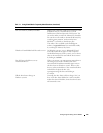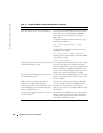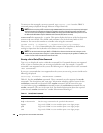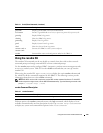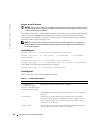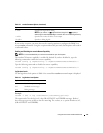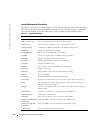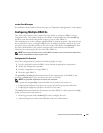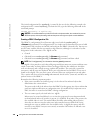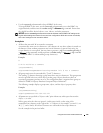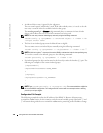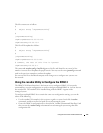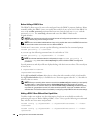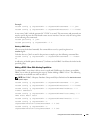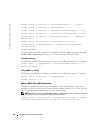
Using the serial and racadm Commands 133
racadm Error Messages
For information about racadm CLI error messages, see "Frequently Asked Questions" in this chapter.
Configuring Multiple DRAC 4s
One of the major features of the racadm CLI is the ability to configure a DRAC 4 using a
configuration file. The racadm CLI parses the DRAC 4 configuration file, called racadm.cfg,
and then sends individual configuration requests to one or more DRAC 4s.
This method may be used to configure multiple DRAC 4 database properties. You must first run
the racadm CLI to query a configured DRAC 4 for its database properties, which are accessed
using their object group IDs and object IDs. The racadm CLI creates the racadm.cfg file from
the retrieved information. You can then configure other cards with the same database
information by exporting this file out to the other DRAC 4s.
NOTE: Some configuration files contain unique DRAC 4 information (such as the static IP address) that
must be modified before configuring other cards.
Configuration File Overview
To use the configuration file, perform the following high-level steps:
1
Get the configuration from the DRAC 4 that contains the appropriate configuration.
2
Modify the configuration (optional).
3
Push the configuration to a target DRAC 4.
4
Reset the target DRAC 4.
The getconfig -f racadm.cfg subcommand requests the configuration of the DRAC 4 and
generates a racadm.cfg file (you can choose any name for this file).
NOTE: The generated .cfg file does not contain user passwords.
Other options for the getconfig command enable you to perform such actions as:
• Displaying all configuration properties in a group (specified by group name and index)
• Displaying all configuration properties for a user by user name
The config subcommand loads the information into other DRAC 4s. Other options for config
enable you to perform such actions as:
• Removing passwords in the
racadm.cfg
file used to configure the card
• Synchronizing the user and password database with Server Administrator



